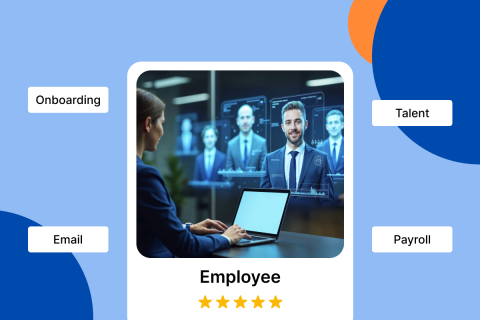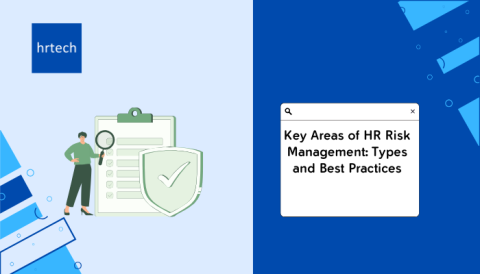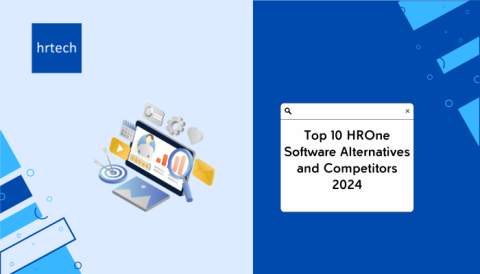Human resource technology has become an essential part of modern business operations, revolutionizing how companies manage their workforce. According to a report by Statista, the global HR software market is projected to reach $38.17 billion by 2027, highlighting the rapid adoption of human resource technology in businesses of all sizes. This technology encompasses a blend of software and hardware designed to streamline HR functions, automating everything from payroll processing to talent acquisition.
Around 50% of companies are now using HR technology to manage recruitment and employee data, according to a survey by Sierra-Cedar. The scope of HR technology extends beyond basic administrative tasks. It includes performance management systems, learning and development platforms, and AI-driven recruitment tools. These systems not only simplify complex processes but also enhance data accuracy, compliance, and employee engagement.
Core Functions and Automation
Human resource technology plays a crucial role in automating various HR functions, reducing the manual workload, and enhancing overall efficiency. One of the key areas is Payroll and Benefits, where automation handles time tracking, salary calculations, deductions, and benefits administration. This not only ensures timely payments but also reduces errors associated with manual data entry.
Talent Management is another critical function, where HR tech streamlines the recruitment process, onboarding experiences, performance evaluations, and continuous employee development. Lastly, Human Capital Management (HCM) centralizes employee data, enabling more effective decision-making and efficient management of HR processes.
Here’s a quick overview of these core functions:
| Function | Description |
| Payroll and Benefits | Automates payroll, time tracking, deductions, and benefits management, ensuring accuracy and compliance. |
| Talent Management | Streamlines recruitment, onboarding, performance evaluations, and employee development for a seamless experience. |
| Human Capital Management (HCM) | Centralizes HR data, providing insights for strategic HR decision-making and process optimization. |
Importance of HR Technology
Human resource technology has become a game-changer for organizations, transforming how HR departments operate and contribute to business success. By automating routine and repetitive tasks, HR technology significantly boosts productivity. For example, automating payroll, benefits administration, and leave management frees up HR professionals to focus on more strategic initiatives, such as employee engagement and talent development.
Key benefits include:
- Productivity Boost: Automation of routine tasks, such as payroll processing and benefits management, allows HR staff to concentrate on higher-value activities like workforce planning and employee development.
- Cost Efficiency: By reducing the need for manual data entry and paperwork, human resource technology cuts administrative costs and minimizes the risk of costly errors.
- Data Centralization: A unified system stores all employee information in one place, providing easy access to accurate data, facilitating better compliance, and enabling data-driven decision making.
Benefits of HR Technology
Human resource technology provides numerous advantages that significantly enhance HR processes, making them more efficient, effective, and strategic. Here’s a breakdown of its key benefits:
Recruitment and Hiring
- AI-Powered Candidate Sourcing: HR technology uses AI to source and screen candidates more efficiently, filtering resumes and matching the best-fit applicants based on skills and experience.
- Automated Assessment: AI-driven tools can conduct initial assessments and provide insights into a candidate’s suitability, saving time and reducing human bias.
Onboarding and Training
- Personalized Onboarding: Digital onboarding platforms create customized experiences for new hires, streamlining paperwork, and introducing them to company policies and culture seamlessly.
- Digital Training Resources: Learning Management Systems (LMS) offer a wide range of online training modules, helping employees acquire skills at their own pace and ensuring consistent training across the organization.
Administrative Efficiency
- Automating Routine Tasks: Human resource technology automates repetitive tasks like timekeeping, expense management, and benefits administration, reducing the workload on HR staff.
- Error Reduction: Automation minimizes human errors in data entry, leading to more accurate and reliable records.
Communication and Collaboration
- Real-Time Communication: HR platforms facilitate seamless communication across teams, whether they are remote or in-office, using tools like chat, video calls, and collaborative documents.
- Employee Engagement: These platforms enhance employee engagement by providing spaces for feedback, announcements, and virtual team-building activities.
Performance Management
- Performance Tracking: HR technology enables continuous performance tracking, allowing managers and employees to set and monitor goals in real time.
- Feedback Mechanisms: Automated feedback systems support regular check-ins and appraisals, creating a transparent and constructive performance management process.
HR Technology Tools
Human resource technology encompasses a wide range of tools designed to streamline different HR functions, from payroll to employee development. These tools help automate processes, improve data accuracy, and provide valuable insights into workforce management. Here’s a detailed look at the key HR technology tools:
Payroll Management Systems
Payroll management systems are designed to handle all aspects of employee compensation, including salary calculations, tax deductions, benefits, and compliance with labor laws. By automating these tasks, companies can ensure accuracy and reduce administrative workload.
Examples:
- ADP: A comprehensive payroll system that manages everything from salary payments to tax filing, and provides analytics to help employers understand workforce costs.

- Ramco: Offers a unified payroll platform that simplifies employee self-service, time tracking, and benefits administration, ensuring smooth payroll processing.

- Workday: Not only handles payroll but also integrates with other HR functions, providing real-time data for decision-making and financial planning.

Benefits Administration Software
Benefits administration software streamlines the management of employee benefits such as health insurance, retirement plans, and paid time off (PTO). These tools centralize benefits data, making it easier for employees to access and manage their benefits while reducing the administrative burden on HR.
Examples:
- BenAdmin: Specializes in benefit enrollment and management, offering tools for both HR professionals and employees to easily navigate benefit options.

- Benefitfocus: Provides a cloud-based platform for managing benefits, with features like plan comparison tools, compliance management, and employee self-service.

- Mercer: A benefits administration solution that offers strategic guidance, streamlined benefits delivery, and analytics to optimize benefit programs.

Talent Management Platforms
Talent management platforms cover the entire employee lifecycle, from recruitment and onboarding to performance reviews and career development. These tools help companies identify, attract, and retain top talent while enhancing employee experiences.
Examples:
- Deel: Offers a complete talent management suite, including recruitment, onboarding, learning, and performance management, all integrated with HR and payroll functions.

- Oracle HCM: A robust platform that includes tools for talent acquisition, talent development, workforce planning, and employee engagement.

- SAP SuccessFactors: Focuses on providing end-to-end talent management, with features like recruiting, learning, succession planning, and workforce analytics.

Performance Management Systems
Performance management systems provide a framework for tracking employee performance, setting goals, and providing continuous feedback. These platforms promote a transparent and consistent approach to performance evaluations, enabling better communication between employees and managers.
Examples:
- BambooHR: Offers a simple yet powerful performance management module, including features for goal setting, performance reviews, and real-time feedback.

- 15Five: Focuses on fostering employee engagement and development through continuous feedback, goal tracking, and one-on-one meeting tools.

- Lattice: Provides a comprehensive platform for performance management, including peer feedback, goal alignment, performance reviews, and employee engagement surveys.

Learning Management Systems (LMS)
Learning Management Systems are designed to facilitate employee training and development. They provide a platform for delivering, tracking, and managing learning content, helping employees upskill and stay compliant with necessary certifications.
Examples:
- Edcast: An all-in-one LMS offering a wide variety of training programs, compliance modules, and personalized learning paths customized to individual employee needs.

- iSpring: A popular LMS that offers a vast library of courses on various topics, allowing companies to provide their employees with diverse learning opportunities.

- Disprz: Provides a wide range of professional development courses, integrating seamlessly with employee profiles to track learning progress and recommend new skills based on career goals.

Each of these tools plays a vital role in modernizing HR processes, ensuring they align with business objectives while enhancing the employee experience.
The Role of Data and Analytics in HR
Data and analytics are transforming HR functions by providing valuable insights for strategic decision-making. Predictive analytics helps forecast workforce needs and identify potential talent gaps, allowing companies to plan for future hiring or training.
Real-time metrics enable HR teams to track key performance indicators (KPIs) like employee engagement, turnover rates, and productivity, ensuring informed decisions. Using these data insights, companies can optimize HR strategies, improve workforce management, and enhance overall organizational performance.
| Role | Description |
| Predictive Analytics | Uses historical and current employee data to forecast future workforce needs and identify potential talent gaps. This includes predicting employee turnover, workforce demand, and skill requirements. |
| Real-time Metrics | Tracks key performance indicators (KPIs) such as employee productivity, engagement, retention, and absenteeism in real time. Provides HR with up-to-date insights into the health of the workforce. |
| Data-Driven Decision Making | Involves analyzing data to guide HR strategies, such as employee development programs, benefits planning, and workforce budgeting. Empowers HR to make informed, evidence-based decisions that align with business goals. |
Challenges in Implementing HR Technology
Implementing human resource technology can be complex due to the need for integration with existing systems and data sources. Additionally, ensuring data privacy, maintaining compliance with regulations, and bridging skill gaps within HR teams can pose significant challenges.

Future Trends in Human Resource Technology
The landscape of human resource technology is transforming rapidly, with several key trends shaping the future of HR technology. Among these trends, AI and machine learning are increasingly automating routine HR tasks like candidate screening, performance evaluations, and employee engagement tracking. These technologies can sift through vast amounts of data, identify top candidates, and provide insights into employee morale, freeing up HR professionals to focus on more strategic tasks.
| Trend | Description |
| AI and Machine Learning | Automates tasks like candidate screening, performance evaluation, and engagement tracking, providing data-driven insights. |
| Cloud-Based Systems | Supports remote work, allowing HR to manage payroll, benefits, and data access from anywhere, enabling flexible practices. |
| Employee Experience Platforms | Enhances employee satisfaction through personalized experiences, feedback tools, and wellness programs, improving overall engagement. |
Conclusion
Human resource technology is essential for modern organizations to stay competitive and run smoothly. As businesses continue to grow and change, adopting the latest HR tools helps in streamlining processes, improving employee satisfaction, and making better decisions based on data. Investing in these technologies and being willing to adapt to new trends is key to meeting the changing needs of the workforce and ensuring long-term success.
Looking to upgrade your HR systems? Visit hrtech to find the best HR software solutions that fit your business needs. Get started today and take your HR management to the next level!





